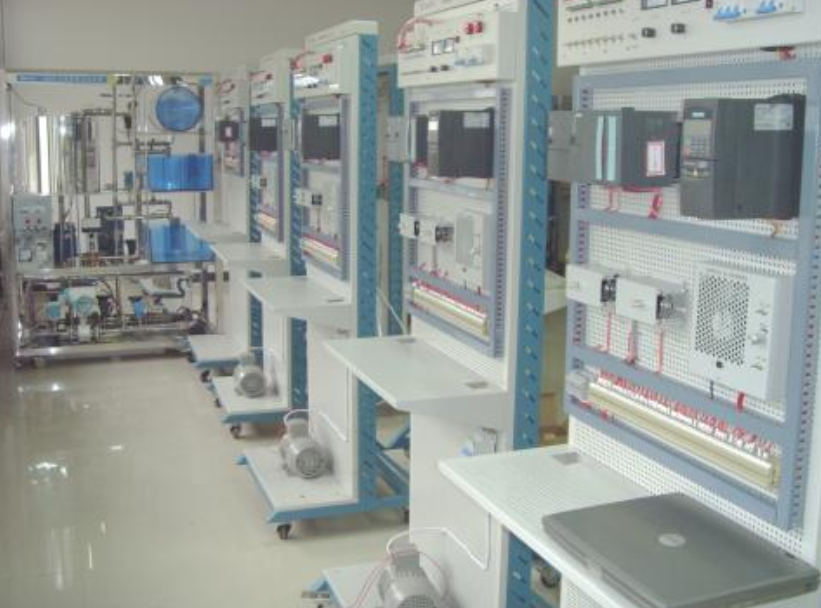Industrial Control Systems (ICS) is a generic term that covers a wide range of control systems, including supervisory and data acquisition (SCADA) systems, distributed control systems (DCS), and other smaller control system configurations, as often in the industry. A non-slip-mounted programmable logic controller (PLC) used in departments and critical infrastructure. ICS is commonly used in industries such as electricity, water, oil and gas, chemicals, transportation, pharmaceuticals, pulp, food and beverage, and discrete manufacturing (eg, automotive, aerospace and durable goods) and paper.
Control systems are critically interconnected and interdependent systems for the operation of critical US infrastructure that is often highly valued. It is important to note that approximately 90% of the country's critical infrastructure is privately owned and operated. Federal agencies also operate many of these industrial processes; other examples include air traffic control and material handling (eg, postal service mail processing). This section provides SCADA, DCS, and PLC systems, including typical architectures and components.

Overview of SCADA/DCS and PLC
SCADA systems are highly distributed systems that are often used to control geographically dispersed assets, spread over thousands of square kilometers, where centralized data collection and control is critical to system operation. They are used in water distribution systems such as water distribution and wastewater collection systems, oil and gas pipelines, power grids and rail transportation systems.
A SCADA control center has long-term centralized monitoring of the communication network on site, including monitoring alarms and processing status data. Based on information received from the remote station, automated or operator-driven monitoring commands can be pushed to the remote station control device, commonly referred to as a field device. Field devices control local operations such as opening and closing valves and circuit breakers, collecting data from sensor systems, and monitoring alarm conditions in the local environment.
DCS is used to control industrial processes such as power generation, oil and gas refining, water and wastewater treatment, and chemical, food and automotive production.
The DCS is integrated into a control architecture that includes controls that supervise the supervisory levels of multiple integrated subsystems. They are responsible for controlling the details of the localization process. Product and process control is typically achieved by deploying feedback or feedforward control loops where key product and/or process conditions are automatically maintained near the desired set point. Completing the required product and/or process tolerances near the specified set point, a specific programmable controller (PLC) is used in the field, and the proportional, integral, and/or differential settings on the PLC are adjusted to provide the desired tolerances and Self-correction rate during process disturbances. The use of DCS is widely used in process-based industries.
PLCs are computer-based solid state devices used to control industrial equipment and processes. PLCs are the control system components used throughout the SCADA and DCS systems. They are typically the main components of a smaller control system configuration used to provide discrete processes for regulatory control of automotive assembly lines and power plant soot blower control. PLC is widely used in almost all industrial processes.
Process-based manufacturing typically utilizes two main processes: a continuous manufacturing process. These processes run continuously, usually in transition to produce different grades of products. Typical continuous manufacturing processes include fuel or steam flow in a power plant, petroleum in a refinery, and distillation in a chemical plant. Mass production process. These processes have a certain number of materials with different processing steps. There is a clear start and end step, and the batch process is likely to perform a brief steady state operation in the intermediate step.
Discrete manufacturing typically performs a series of steps on a single device to create the final product. Electronic and mechanical parts assembly and part processing are typical examples of this industry. Both process-based and discrete industries use the same type of control systems, sensors and networks. Some facilities are a mixture of discrete and process-based manufacturing. Although the control systems used in distribution and manufacturing are very similar in operation, they are different in some respects. The main difference is that DCS or PLC controlled subsystems are usually located in relatively narrow factories or plant-centric areas, compared to geographically dispersed SCADA sites. DCS and PLC communication typically uses a long-distance communication system that is typically used by local area network (LAN) technology for relatively reliable and high speed SCADA systems.
In fact, the SCADA system is specifically designed to handle long-distance communication challenges such as latency and data loss by the various communication media used. DCS and PLC systems typically employ a greater degree of closed-loop control than SCADA systems because the control of industrial processes is often more complex than the supervisory control of the distribution process. These differences can be considered in the scope of this document to a very small extent, with an emphasis on the integration of information technology (IT) and the security of these systems. In the rest of this document, SCADA systems, DCS and PLC systems will be cited.
Nanning Ousibang Information Technology Co., Ltd. , https://www.ousibangvape.com
